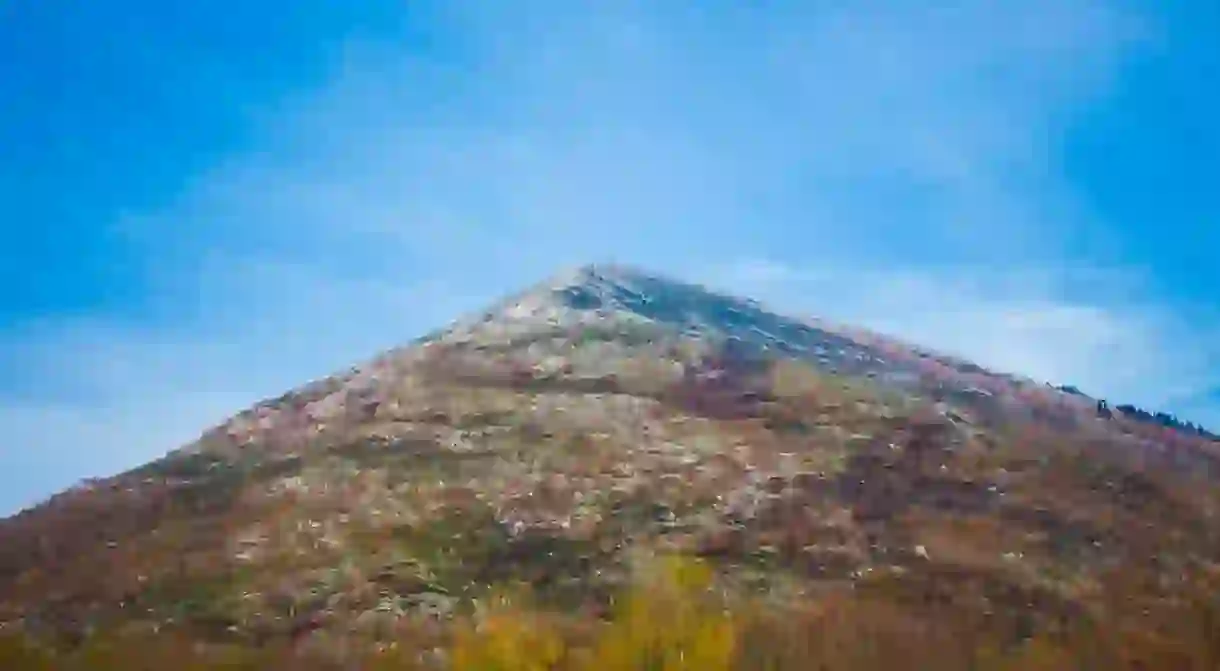11 Things You Didn't Know About Serbia

Who doesn’t love a little bit of trivia? Everybody knows about Belgrade’s nightlife, Novi Sad’s festivals and the dark ‘90s – but what about pyramids, clock making and raspberries? If you’re looking to impress your friends with your knowledge of Serbia, simply recite this handy list of little known facts.
Vampires originated here
Vampires are obviously mythical beasts, but the word itself originates from the Serbian language. When the Austrians took over what is today Vojvodina in the 18th century, they became aware of a peculiar tradition among the local people. The northern Serbians had a tendency to exhume the bodies of the dead in order to kill them again, referring to the cadavers as ‘vampires’.
The name stuck, and it is one of the few international words of Serbian origin. The Balkan nation was never held fully responsible for the tide of mediocre teenage literature that took the undead as central characters however.

The Celts were here before the Slavs
Serbia is one of the largest Slavic nations on the planet, but it hasn’t always been so. The Slavs arrived in the area in the 6th and 7th centuries, setting up camp and remaining in the Balkans ever since. Centuries before Slavic tongues started wagging in Serbia, the Celts had set up shop in the form of the Scordisci.
You have to go back way before the birth of Christ for this, although the Scordisci were ran out of the area a decade or so before JC arrived on the planet. They were eventually Romanised, leading to their political extinction.
Serbia exports a lot of the world’s raspberries
Delicious raspberries aren’t exactly the first things that jump to mind when you think of Serbia. The small red berries might not even be the first fruit you associate with the nation. Serbia is one of the world’s largest exporters of raspberries however, accounting for around a quarter of all the world’s exports. The number is declining however, so this will change. If you’re struggling to choose a rakija flavour, maybe go for a cheeky malinovača.
There are pyramids here
Claiming the existence of pyramids may well be a favourite pastime of Balkan nations, but Serbia has a very clear shout in this regard. The mighty Rtanj mountain comes together in a perfect point at its peak, proving once and for all that you don’t need to sacrifice thousands of lives to create a pyramid.

Two alphabets are in use
There are many countries across the world that utilise multiple alphabets, but Serbian is the only European language whose speakers are fully digraphic, which is to say completely fluent in two alphabets. Both the latin and cyrillic scripts are in use here, so it pays to read up on the latter if you’re planning on heading to Serbia sometime soon.

It was a hotbed for Roman Emperors
Some 18 Roman Emperors were born on Serbian land, putting Serbia second only behind Italy in that particular list. Trajan Decius was the first, born in 201AD in what is today’s Martinci (Vojvodina). 220 years passed before the death of the 18th, the Niš-born Constantius III. Constantine the Great is undoubtedly the most famous, and the man from Niš was the leader who elevated Christianity to the role of state religion.
Constantinople was named after a Serb
Following on from that last point, Constantinople was once one of the most important cities on the entire planet. We now know it as Istanbul, but its previous moniker came from the aforementioned Constantine the Great, the man from Niš who made the city the capital of the entire Empire. The name fell out of favour in the mid 15th century, but was still used in the West up until the early 20th century.

One of Europe’s shortest rivers
The second longest river in Europe plays a major role in daily life in Serbia, but did you know that one of the continent’s shortest waterways can also be found here? The Vrelo is a tributary of the mighty Drina, and it just so happens to be 365 metres long. This is a metre for every day of the year (not including leap years), and it packs a lot into that short distance. Head to the border with Bosnia for a glimpse.

Warfare’s most decorated female
Serbia has seen plenty of conflict over the centuries, so it may not be a huge surprise that the nation provided the most decorated female in the history of modern warfare. Milunka Savić took her brother’s place in the army just in time for the First Balkan War, and what a soldier she turned out to be. She received honours from all over the world, but her life petered out to a somewhat tragic end following World War II.

Serbs introduced St. Petersburg to time
Okay, that isn’t entirely true, but it was a Serbian who built the very first mechanical clock in the history of Russia’s second city. Lazar the Serb was the man responsible for the invention, creating the device way back in 1404. To put this in some sort of context, the Swiss didn’t start making clocks until 1601, and you don’t need to be a mathematician to see there are two centuries between those two numbers. Did the Serbs invent time? Absolutely not, but they did their bit towards helping us tell it.
The first image in space
The Cuban Missile Crisis scared the living daylights out of everyone, and offerings of peace were in abundance when it came to an end. One of these involved the first satellite broadcast signal from Europe to North America, and a Serbian fresco by the name of The White Angel was chosen as the message. This same image was later sent to space in an attempt to establish contact with aliens, but it yielded little success!














